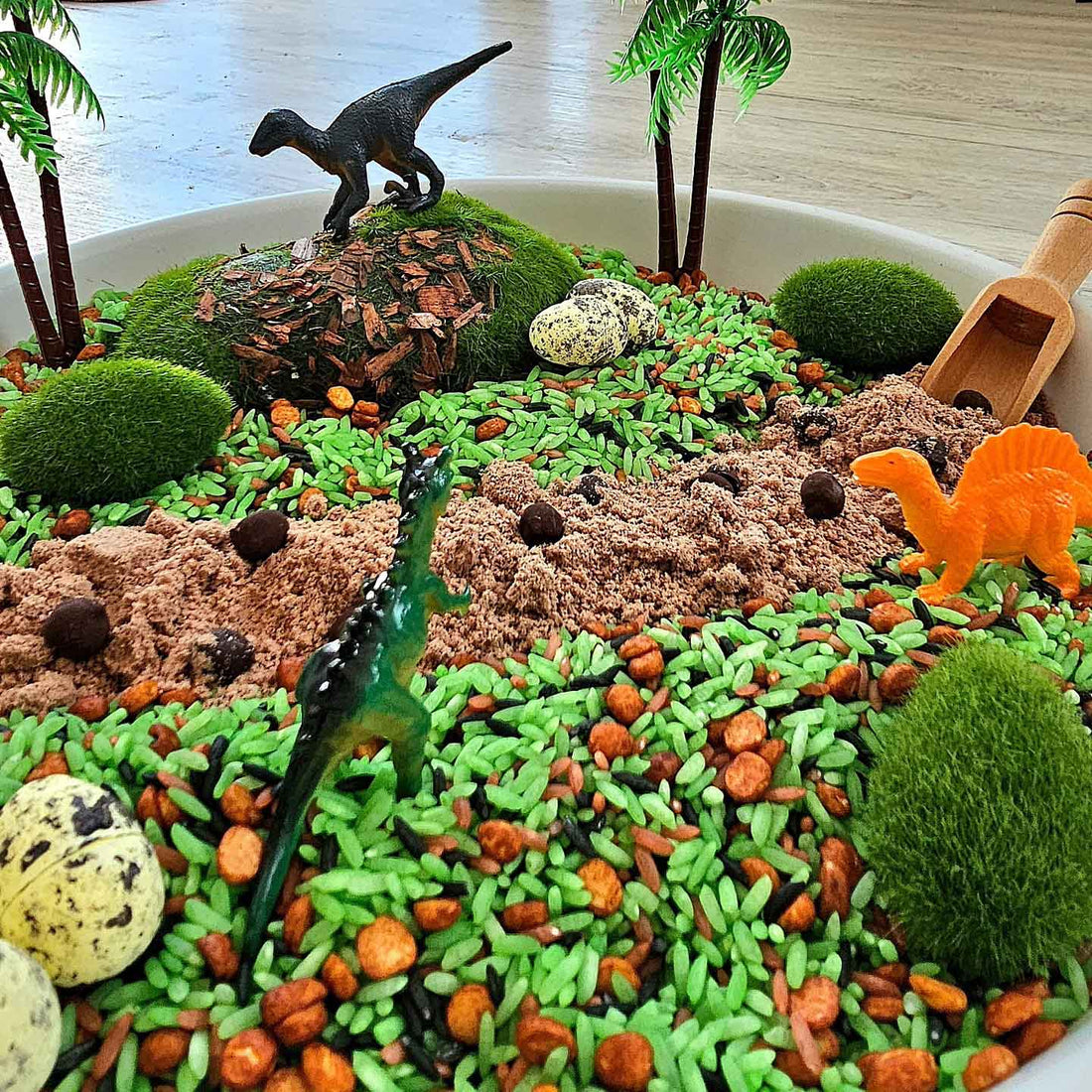
Ultimate Guide to Tuff Tray Ideas: Creative Setups for Engaging Play
Play SenseShare
Tuff trays have become a staple in early childhood education and at-home play setups. These versatile, large, plastic trays provide an excellent platform for sensory activities, imaginative play, and educational setups. In this guide, we'll explore a variety of tuff tray ideas and setups that can captivate children's attention, encourage learning, and spark creativity. Whether you're a parent, teacher, or childcare provider, you'll find plenty of inspiration to make the most of your tuff tray. All these ideas are easily transferable into our sensory trays, so if you don’t have a tuff tray or the space to store one, shop our sensory trays for some at home table top fun!
What is a Tuff Tray?
A tuff tray is a robust, typically hexagonal plastic tray with raised edges. Originally designed for construction purposes, these trays have been repurposed for children's play due to their durability and large surface area. They are perfect for containing messy play activities and can be used both indoors and outdoors.
Why Use a Tuff Tray?
· Versatility: Tuff trays can be used for a number of activities including sensory play, arts and crafts, small world play, and even water play.
· Containment: The raised edges help to contain materials, making cleanup easier.
· Engagement: With the right setup, a tuff tray can captivate children's interest for extended periods, encouraging independent play and exploration.
Top Tuff Tray Ideas for Different Themes
1. Sensory Play Setups
Sensory play is crucial for children's development, helping to enhance their cognitive, language, and motor skills, whilst being engaging and fun. Here are some sensory tuff tray ideas:
Water Bead Sensory Tray:
· Setup: Fill the tray with hydrated water beads, add scoops, funnels, and small containers.
· Enhancements: Add waterproof toys like plastic animals or boats to create a themed environment.
Sand and Seashells:· Setup: Spread a layer of play sand across the tray and scatter various seashells.
· Enhancements: Include small shovels, rakes, and cups to encourage digging and exploration.
Foam Party:· Setup: Fill the tray with foam (created from water and soap) and add food colouring for vibrant effects.
· Enhancements: Include plastic animals or figures that children can use to play within the foam.
2. Small World Play
Small world play involves creating miniature environments where children can act out scenarios, enhancing their creativity, imagination and storytelling skills. This is one of our favourite ways to use a tuff tray or sensory tray – it’s an ideal way to engage your little one and help them learn about the world.
Farmyard Fun:
· Setup: Cover the tray with a mixture of coloured chickpeas or rice for the ground, add some of our taste safe sensory dirt for another textural element and place small toy farm animals, tractors, and fences.
· Enhancements: Add miniature buildings or barns and create small ponds with blue rice, pasta or chickpeas.
· Setup: If you’re not using our Dino Pour & Play kit, you can create this small world easily by using play sand or kinetic sand to form the base, add coloured rice & chickpeas and place plastic dinosaurs, rocks, and fake plants.
· Enhancements: Add a small container of water to represent a watering hole and include miniature trees and caves.
Arctic Adventure:
· Setup: Cover the tray with white rice and chickpeas, add cotton wool to mimic snow, and place polar animals like penguins and polar bears.
· Enhancements: Add blue rice for water effects and small ice cubes for realism.
3. Educational Tuff Tray Ideas
Educational setups can make learning fun and interactive. Here are a few ideas that blend play with education:
Alphabet Discovery:
· Setup: Scatter foam or plastic letters across a base of rice or pasta.
· Activities: Encourage children to find and spell out words or match letters to pictures of objects.
Number Hunt:
· Setup: Hide number cards or foam numbers in a base of sand or shredded paper.
· Activities: Create simple math problems or counting games using the found numbers.
Science Experiment Station:
· Setup: Set up simple science experiments such as vinegar and baking soda volcanoes, or coloured water mixing.
· Activities: Provide magnifying glasses, test tubes, and pipettes to encourage scientific exploration.
4. Art and Craft Setups
Tuff trays are perfect for containing the mess that often comes with arts and crafts.
Painting Extravaganza:
· Setup: Place paper at the base of the tray and provide various paints, brushes, and sponges.
· Enhancements: Include stencils, stamps, and rollers for different painting techniques.
Clay Creations:
· Setup: Fill the tray with air-dry clay and provide tools for shaping and cutting.
· Enhancements: Add natural materials like leaves, sticks, and stones for imprinting patterns.
Collage Making:
· Setup: Scatter various materials like fabric scraps, buttons, beads, and coloured paper.
· Enhancements: Provide glue, scissors, and templates for creating specific shapes or themes.
Tips for Effective Tuff Tray Setups
1. Theme Selection: Choose a theme that aligns with the child's interests to keep them engaged.
2. Safety First: Ensure that materials used are age-appropriate and non-toxic.
3. Variety: Regularly change the setups to keep the activities fresh and exciting.
4. Supervision: While tuff trays can encourage independent play, it's important to supervise young children to ensure safety.
Tuff trays are an invaluable tool for encouraging creative, educational, and sensory play. With endless possibilities for tuff tray setups, you can tailor activities to meet the needs and interests of the children in your care. By incorporating these tuff tray ideas into your play
Note: Ensure safe play at all times. Never leave your child unattended. Our products are suitable for ages 3+ and should be used under supervision.



